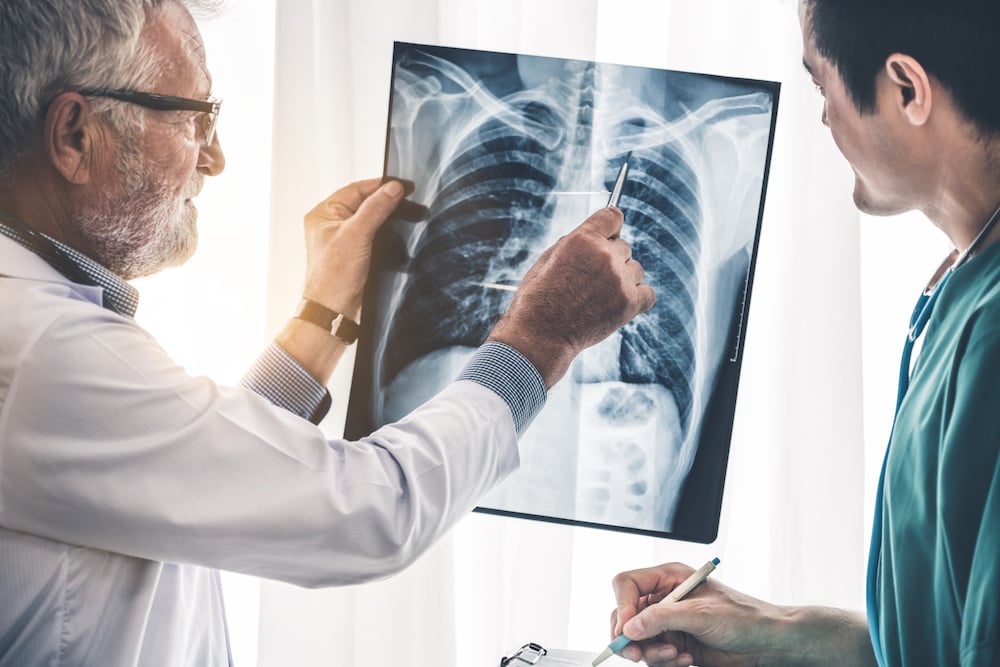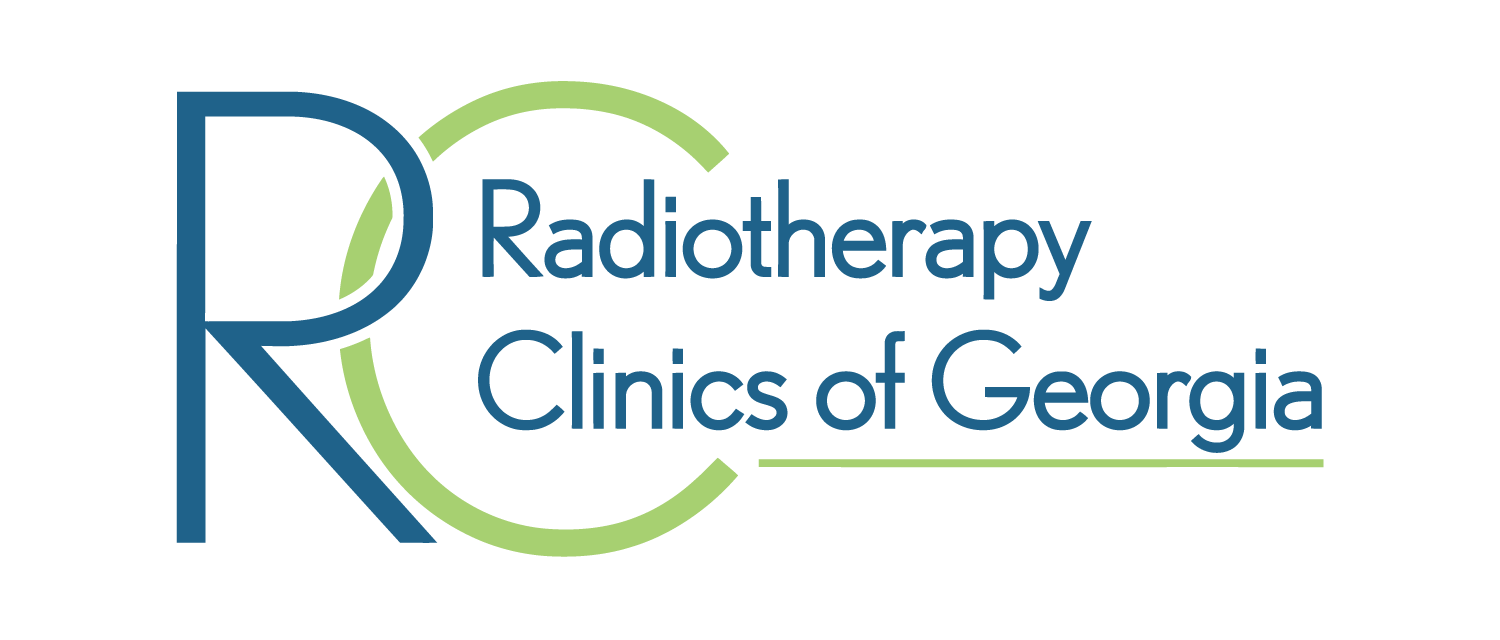
Lung cancer continues to be one of the most common cancers, so understandably, a lung nodule diagnosis sounds concerning. Before thinking the worst, you should know that most lung nodules are benign (noncancerous) and rarely need treatment. There are some cases, however, where a lung nodule is associated with cancer. Let’s look at what causes lung nodules and what happens after a diagnosis.
Lung Nodules: What They Are and What Causes Them
A lung (pulmonary) nodule is an abnormal growth in the lung. They are relatively common, often forming after a lung infection. Air irritants and autoimmune diseases, such as rheumatoid arthritis and sarcoidosis, are other possible causes. Lung nodules are often detected. In fact, they’re found in up to half of adults who have a chest X-ray or CT scan performed for another health condition.
When lung nodules form, they start as a small clump of cells. Over time, these cells calcify and harden, making them easier to detect on chest x-rays. It’s possible to have just one or several lung nodules. The doctor may refer to the nodule as a “shadow” because it appears as a white spot on the x-ray image. Nodules vary in size, ranging from 3mm to 25mm or more in diameter. Small lung nodules are those measuring less than 9 mm.
In most cases, lung nodules are not cancerous. At times, however, they can be an early sign of lung cancer.
How To Know if the Nodule is Cancerous
Your healthcare team can take a few different courses of action if a pulmonary nodule is detected. Remember, about 95% of lung nodules are harmless. Still, your doctor will need to confirm if that is the case regarding your situation. To determine whether the nodule, or nodules, are cancer, your healthcare provider will:
- Assess your risk for lung cancer. Certain risk factors may increase the chance of a nodule being cancerous. These include being over the age of 50, having a larger nodule, smoking, or having a family history of lung cancer.
- Evaluate images and order more if necessary. Immediate action might not be required depending on the size of your nodule. Your doctor may start with active surveillance, which is watching the nodule for growth over time. Additional testing, such as CT scans or a PET scan, might be needed for larger nodules to determine the cause and rule out lung cancer.
- Perform a biopsy if needed. A biopsy is the only test to confirm whether the nodule is cancerous. Your lung specialist is likely to biopsy nodules that are 9 mm or larger.00
Biopsied lung nodule tissue is sent to a lab where a pathologist can examine it for cancer, infection, scar tissue, and other lung problems. Results that show cancer mean further testing will be needed to determine what kind of cancer it is.
Lung Cancer Screening Helps Find Nodules in High-Risk Patients
Individuals who smoke are at an increased risk of developing lung nodules. This is because smoke is a lung irritant. Of course, the best way to reduce your risk of lung nodules and lung cancer is to quit smoking altogether, but you may also want to consider lung cancer screening.
Lung cancer screening uses low-dose CT scans to check your lungs. Screening can also help detect lung nodules. However, it’s not recommended for everyone. If you meet ALL three parts of the following criteria:
- You are between the ages of 50 and 80 years old
- You have a “20-pack-year” smoking history
- You currently smoke or have quit within the past 15 years
Smoking one pack of cigarettes per day for a year is considered a “pack-year” by the CDC. This means that ten pack years could be from an individual who smoked a pack a day for 10 years or somebody who smoked two packs a day for five years.
Your doctor will review the scan and determine if there is an area of concern that needs to be monitored or even perhaps biopsied to check for lung cancer. Most insurance plans, including Medicare, cover lung cancer screening for eligible patients.
What Happens When Active Surveillance Isn’t Enough?
Patients whose lung nodules are considered small and are non-cancerous can safely be monitored with screenings and usually don’t require treatment, especially in cases where the nodule isn’t interfering with breathing. When symptoms do occur, however, they can manifest themselves in several different ways, such as coughing, wheezing, shortness of breath, or respiratory infection. Be sure to contact your physician if you experience any changes while your nodule is monitored. Symptoms you should bring to the attention of your doctor include:
- Coughing up blood or a change in your cough
- Unexplained weight loss
- Chest pain
- Shortness of breath
- Fever or chills without another infection, such as a cold
Experiencing symptoms does not automatically mean you have lung cancer, but your doctor will still need to take a closer look. Sometimes, surgery is necessary to remove the nodule if it continues to grow and cause problems. If it can still be monitored safely and doesn’t require treatment, your doctor may be able to offer other treatments that can help you find relief.
What if the Lung Nodule is Cancerous?
If your biopsy results determine that your lung nodule is cancerous, your physician will recommend that you meet with an oncologist who can talk with you about treatment.
Oncologists are cancer specialists. Several types of oncologists can be a part of the treatment process, including a medical oncologist and a radiation oncologist.
The doctors you will need depend on the recommended treatment plan. For lung cancer, treatments can include medical oncology therapies such as chemotherapy, targeted therapy, and immunotherapy given by a medical oncologist. The medical oncologist will also work with the radiation oncologist, who provides radiation therapy, and a surgeon. Surgery is not always part of the treatment plan. It depends on where the nodules are located in the lung and how far the cancer spread before it was found.
External Beam Radiation Therapy for Lung Cancer
External beam radiation therapy is a common method used for treating lung cancer. It delivers high-intensity beams to a very specific area from outside the body. If radiation therapy is recommended as part of your treatment plan, you can choose where to receive it.
Lung Cancer Care Conveniently Located in the Atlanta Area
If you are newly diagnosed with lung cancer, you are likely to visit with a medical oncologist first. If radiation therapy is a part of your treatment plan, our team of experts is conveniently located in cities throughout the Atlanta area, including Conyers, Covington, Decatur, and Snellville.




